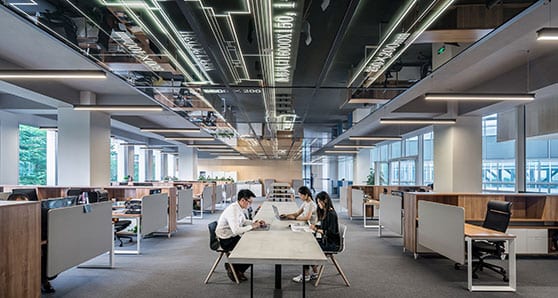Anyone who thought there was a glimmer of hope in Calgary’s beleaguered downtown office market should pay attention to a new report released by commercial real estate firm Cresa.
“We are not going to mince words . . . things are bad and potentially getting worse for the overall Calgary office space market. We realize this isn’t the “soundbite” being provided by much of our industry, but it is the way we see it,” said the report.
“When real estate firms work for landlords and tenants in the same market, they have to walk a tight rope on the message delivered for all the obvious reasons. Cresa, who exclusively works for occupiers of space and never for landlords or developers, has an unbiased view of the market and our literature reflects that unique position within the industry.
“The caveat on this message is the “winners” in the market, being the Class AA and select Class A landlords who are upgrading their assets seeing most of the attention from mid to large sized users in the market. With many tenants, and select landlords going bankrupt or in bankruptcy protection, commodity prices continuing their struggle, lack of capacity for efficient egress of our commodities, combined with lack of investment capital we do not see any material reason for 2020 to be different than 2019 – overall spotty with minimal absorption, if not negative. Again, there are some emerging industries that shed a touch of light on the situation, but we all know Calgary is currently a two horse town – oil and gas – and until such time we experience a prolonged recovery of commodity prices and a return of capital in our province, it is hard to see the headwind changing direction.”
The numbers tell the story of just how bad it is in the downtown office market these days. According to Cresa, the market finished 2019 with a vacancy rate of 25.96 per cent which is the highest level in over 30 years.
Calgary’s downtown has 43.8 million square feet of office space. At the end of 2019, 11.4 million square feet was vacant. That consists of 8.7 million square feet of headlease space representing 19.81 per cent of vacancy and 2.7 million square feet of sublease space representing 6.15 per cent of vacancy.
“We started out on a relatively positive note in the office market in 2019 with the first two quarters registering positive absorption totalling 402,815 square feet. We ended the year in the completely opposite manner. The last two quarters totaled negative 873,868 square feet bringing the total absorption for 2019 to negative 471,053 square feet,” said Cresa.
“We have seen some migration of tenants from the suburban market into downtown (Golder Associates, Worley Parsons, Wood Group). While this is a positive sign, these relocations are not robust enough to offset the negative absorption in other areas of the market.
“Looking back to 2014, when this prolonged downturn started, the downtown core has experienced over 5.8 million square feet of negative absorption. To put it in perspective, this amount of space is roughly equivalent to The Bow coming to market – 3.5 times over!”
Cresa said Class AA space continues to register interest from many companies looking to upgrade their standard of living.
“Although additional sublease space has offset the leasing accomplished, we fully expect this is a trend that will continue to benefit those with high quality assets. Looking at the Class A market, many larger institutional owners (who are making great returns on real estate everywhere except Alberta) are investing large amounts of capital by way of upgrades to their buildings. Product that jumps to mind are buildings such as 240 Fourth (formerly BP Centre), Millennium Tower, Devon Tower, Bow Valley Square, Fifth & Fifth etc. These buildings are having success on the leasing front, but for every winner there’s a loser, and many tenants relocating into these buildings are at the peril of other landlords who may not be in a position, or have the war chest, of their competitors to spend the same out of money on their assets to attract active tenancies,” said the report.
“The upgrades are generally in the form of common area improvements and modernization (lobbies, +15 level, elevators), tenant lounges, fitness and conference areas. Also, many landlords seeing leasing success are building new show suites in their buildings (on a floor by floor basis), which alleviates yet another barrier for tenants to move by shifting the workload of building space off a tenant’s hands. These buildings, for the most part, are now decades old and needed some love. They are getting it, and tenants are rewarding landlords who are being proactive on this front.”
Mario Toneguzzi is a business reporter in Calgary.
![]() The views, opinions and positions expressed by columnists and contributors are the author’s alone. They do not inherently or expressly reflect the views, opinions and/or positions of our publication.
The views, opinions and positions expressed by columnists and contributors are the author’s alone. They do not inherently or expressly reflect the views, opinions and/or positions of our publication.

